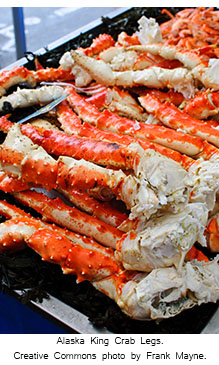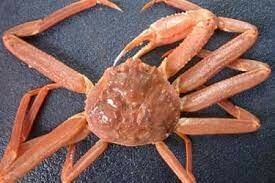National surveys show clearly that most Americans want to know where their foods come from. Seafood lovers can easily tell at retail counters where their salmon and other fish choices come from, and if the fish is wild or farmed.
That’s due to Country of Origin Labeling (COOL) laws, which went into effect a decade ago. But the laws do not apply to seafood that has been ‘processed,’ no matter how minimally.
A processed food item is defined as “a retail item derived from a covered commodity that has undergone specific processing resulting in a change in the character of the covered commodity.” Under this definition, “cooking (e.g. frying, broiling, grilled, boiling, steaming, baking, roasting)” is an example of a specific process that results in such a change, meaning those products are exempt from the COOL requirements.
“It was a surprise to all of us who worked very hard to get seafood included in all product forms,” said Mark Vinsel, executive administrator for United Fishermen of Alaska, which represents 35 fishing groups.
The Bering Sea king and snow crab fisheries have been hurt the most by the lack of labeling.
“Since all crab are required to be cooked right after delivery they are exempt,” said Jake Jacobsen, director of the Inter-Cooperative Exchange, a harvester group that catches 70 percent of the Bering Sea crab quota.
The push to exclude products such as canned, pouched or smoked fish and steamed crab, Jacobsen said, came from the U.S. tuna fleet.
“All we wanted to do was carve out crab but they had a much more powerful lobby than we did,” he said.
The crabbers believe the public has a right to know where their crab comes from and they have not backed down from the COOL battle.
“Right now when a consumer goes into a grocery store they don’t know if the crab comes from Russia or Newfoundland or Alaska,” Jacobsen said, “and we think that the American consumers will prefer Alaskan product, especially if there is a chance that much of the crab imported from Russia might be illegal.”
A McDowell Group analysis showed that almost 100 million pounds of pirated Russian crab entered the U.S. in 2013, valued at roughly $600 million. An estimated 40 percent of king crab sold in world markets was from illegal Russian harvests.
The situation has improved somewhat due to tighter international regulations, but Jacobsen said the outcomes are too soon to tell.
“There is still illegal crab going into China and Korea and finding its way into the U.S. but there is no way to tell if it’s legal or not because there is no traceability requirement,” Jacobsen explained.
Appeals so far to U.S. policy makers have fallen on deaf ears, so crabbers have gone directly to buyers and retailers. HyVee and Publix only source crab from Alaska and Jacobsen hopes more will follow suit.
Meanwhile, the push to get USA labeling on Alaska crab will continue.
“Absolutely,” he said. “It is a big issue to us and very important in the overall program of eliminating illegally caught crab that is imported into the U.S.”







